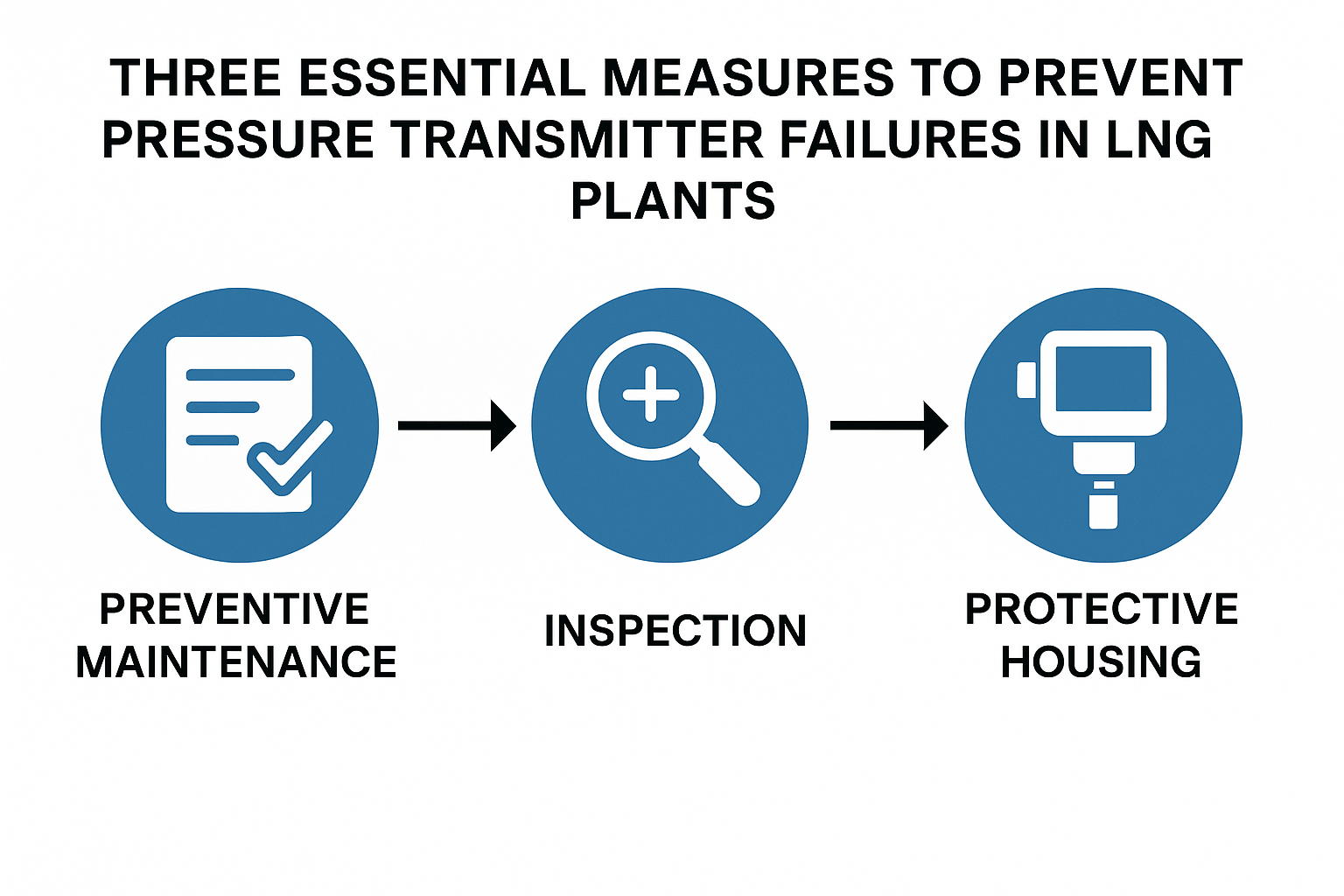In large-scale LNG (Liquefied Natural Gas) operations, even minor measurement errors can jeopardize process safety. This article presents a real-world case from a 30,000 Nm³/day LNG project, where a pressure transmitter displayed a slow response and increasing deviation, ultimately traced to a blocked vent hole. Based on this case, we provide three practical measures to prevent similar failures in micro-pressure applications.

1. Case Overview: Anomalous Readings in Micro-Pressure Measurement
Project Background:
LNG capacity: 30,000 Nm³/day
Commissioned: 2014
Transmitter tag: PT4110
Medium: Nitrogen (for cryogenic insulation)
Working pressure: 1 kPa (at ambient temperature)
Model: Yokogawa EJA430A DMS4A-29DC/NF11
Range: 0–2.5 kPa, Output: 4–20 mA DC
1.1 Symptom Description
The operator reported increasing deviation (up to 0.5 kPa) between the transmitter and the local pressure gauge. In addition, the transmitter displayed a sluggish response, taking up to 10 minutes to stabilize after pressure changes. No diagnostic alarms were triggered.
1.2 Impact
Such delayed and inaccurate readings pose serious safety risks to cryogenic systems. In this case, it compromised the nitrogen blanket pressure monitoring of the cold box, potentially leading to system imbalance or hazards.

2. Troubleshooting and Root Cause Analysis
2.1 Field Actions Taken
A secondary remote gauge was installed to verify the transmitter’s inaccuracy.
Pressure lines were inspected — no blockage found.
Drain bolt on the transmitter was opened — the reading did not return to zero.
Transmitter was removed and inspected in the maintenance workshop.
2.2 Key Findings
Diaphragm was intact, with no deformation or rupture.
Positive side of the pressure chamber was clean.
The vent hole on the negative pressure chamber was severely clogged by foreign debris, as shown in Figure 1.
After cleaning the vent, the transmitter returned to normal operation.
2.3 Extended Inspection
Similar issues were found in other micro-pressure transmitters during subsequent inspections. This suggested a systemic issue linked to lack of protective measures against foreign body intrusion.

3. Root Cause Summary
| Factor | Description |
|---|---|
| Direct Cause | Clogged vent hole in the negative pressure chamber |
| Indirect Cause | Absence of protective housing to block insects or debris |
Micro-pressure transmitters are particularly vulnerable to environmental interference such as wind, moisture, and small insects like mud wasps, which often nest in exposed cavities.
4. Recommended Preventive Measures
4.1 Establish Preventive Maintenance Plans
Perform routine calibration (single-point and multi-point) and zero checks.
Include micro-pressure devices in periodic performance verification programs.
4.2 Enhance Field Inspection and Logging
Cross-check readings between local and remote indicators regularly.
Establish response protocols for mismatched readings.
4.3 Install Protective Enclosures
Use instrument protective boxes made of stainless steel or UV-resistant polymer.
Ensure the enclosure includes a breather vent with filters to maintain atmospheric equalization.
Apply insect screens or breathable mesh for pressure chambers with vent holes.
Figure 2 shows a cleaned vent hole on a pressure transmitter after blockage removal.

5. Conclusion
This case illustrates how a small design oversight — the absence of a protective box — can evolve into a critical fault over time. For micro-pressure applications such as nitrogen shielding in LNG cold boxes, ensuring ventilation integrity, periodic inspection, and environmental protection is essential. Implementing the three measures outlined above can significantly reduce the likelihood of false readings and improve operational safety.
📌 Need a tailored solution for your pressure instrumentation systems? Contact Dalian Zero Instrument Technology Co., Ltd. for customized protection and maintenance kits.
